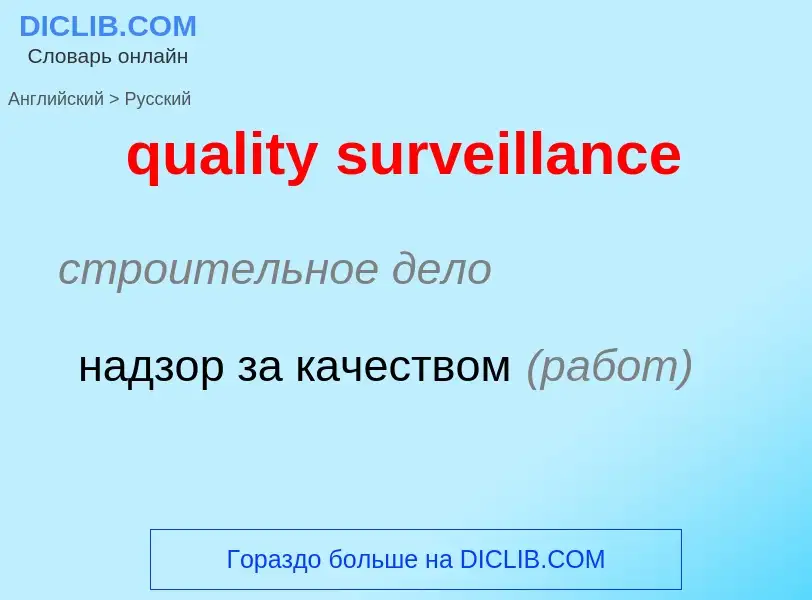Translation and analysis of words by ChatGPT artificial intelligence
On this page you can get a detailed analysis of a word or phrase, produced by the best artificial intelligence technology to date:
- how the word is used
- frequency of use
- it is used more often in oral or written speech
- word translation options
- usage examples (several phrases with translation)
- etymology
quality surveillance - translation to russian
строительное дело
надзор за качеством (работ)
Definition
Wikipedia
Public health surveillance (also epidemiological surveillance, clinical surveillance or syndromic surveillance) is, according to the World Health Organization (WHO), "the continuous, systematic collection, analysis and interpretation of health-related data needed for the planning, implementation, and evaluation of public health practice." Public health surveillance may be used to track emerging health-related issues at an early stage and find active solutions in a timely manner. Surveillance systems are generally called upon to provide information regarding when and where health problems are occurring and who is affected.
Public health surveillance systems can be passive or active. A passive surveillance system consists of the regular, ongoing reporting of diseases and conditions by all health facilities in a given territory. An active surveillance system is one where health facilities are visited and health care providers and medical records are reviewed in order to identify a specific disease or condition. Passive surveillance systems are less time-consuming and less expensive to run but risk under-reporting of some diseases. Active surveillance systems are most appropriate for epidemics or where a disease has been targeted for elimination.
Techniques of public health surveillance have been used in particular to study infectious diseases. Many large institutions, such as the WHO and the Centers for Disease Control and Prevention (CDC), have created databases and modern computer systems (public health informatics) that can track and monitor emerging outbreaks of illnesses such as influenza, SARS, HIV, and even bioterrorism, such as the 2001 anthrax attacks in the United States.
Many regions and countries have their own cancer registry, which is monitors the incidence of cancers to determine the prevalence and possible causes of these illnesses.
Other illnesses such as one-time events like stroke and chronic conditions such as diabetes, as well as social problems such as domestic violence, are increasingly being integrated into epidemiologic databases called disease registries. A cost-benefit analysis is conducted on these registries to determine governmental funding for research and prevention.
Systems that can automate the process of identifying adverse drug events, are currently being used, and are being compared to traditional written reports of such events. These systems intersect with the field of medical informatics, and are rapidly becoming adopted by hospitals and endorsed by institutions that oversee healthcare providers (such as JCAHO in the United States). Issues in regard to healthcare improvement are evolving around the surveillance of medication errors within institutions.

